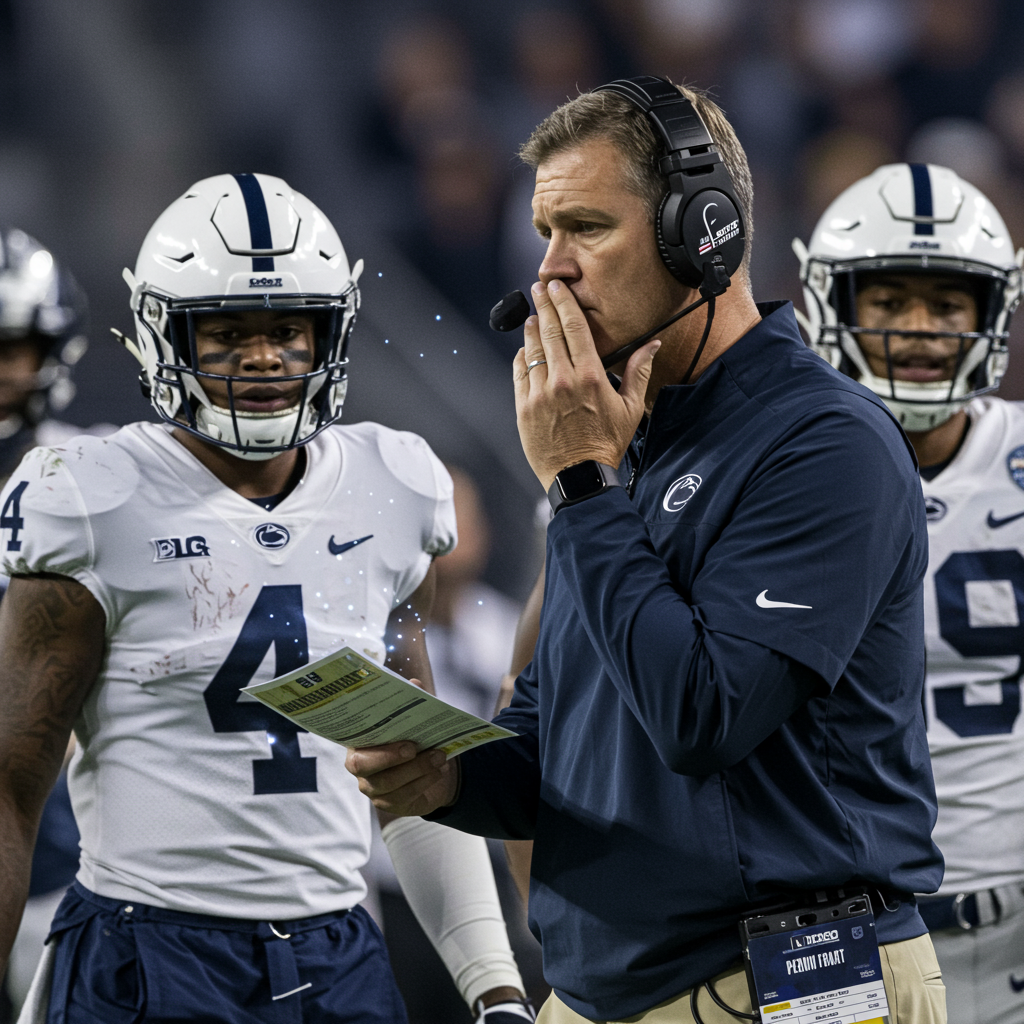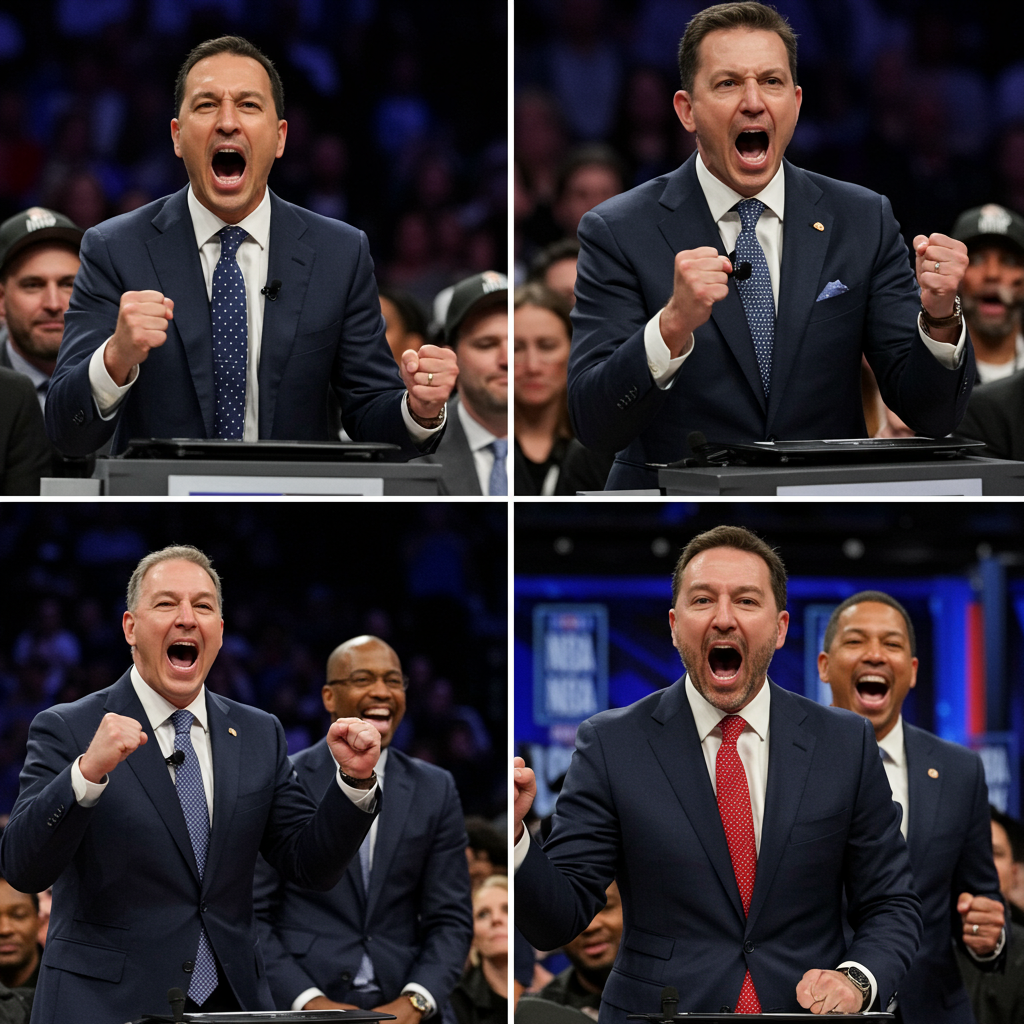The landscape of college football shifts constantly, but few events rattle a program like an in-season coaching change. With James Franklin’s recent departure from Penn State, Nittany Lions fans and analysts are grappling with an urgent question: will the team face a wave of Penn State transfers through the rampant transfer portal? Interim head coach Terry Smith is navigating these turbulent waters, balancing player retention with immediate on-field performance and future recruiting. Understanding the current NCAA rules and the team’s internal dynamics reveals a nuanced situation for player movement and program stability.
Navigating the Transfer Portal After a Coaching Shift
The college football transfer portal has redefined player mobility, making coaching changes a significant catalyst for roster upheaval. When a head coach is fired, it’s common to see players explore their options, sometimes even sitting out to preserve a redshirt year. This scenario is now playing out in State College following James Franklin’s dismissal. However, specific NCAA regulations and the timing of Franklin’s exit create a unique, albeit complex, situation for potential Penn State transfers.
Penn State is already six games into the 2025 season. A crucial NCAA rule dictates that any player who has participated in five or more games has “burned” their redshirt for that season. This significantly narrows the pool of players who could hypothetically sit out the remainder of the schedule to save a year of eligibility. Those who have played five games or more would lose a year of eligibility if they transferred without playing the full season.
Furthermore, a critical NCAA rule change implemented this season favors programs like Penn State during an in-season coaching change. Athletes whose head coach is fired mid-season must now wait for the general one-time transfer window to open on January 2nd of the following year. This contrasts with firings after January 2nd, which would grant players a special 15-day window to enter the portal once a new coach is hired. This specific timing means any potential exodus of Penn State transfers will be delayed until the new year, giving the interim staff valuable time to stabilize the roster.
Identifying Potential Redshirt Candidates and Roster Concerns
Despite these mitigating factors, the possibility of future Penn State transfers remains a tangible concern. According to PennLive’s unofficial count, 31 Nittany Lions players could still technically redshirt and, in theory, choose to sit out the rest of the 2025 season. The majority of these are freshmen, representing the future core of the program. Losing a significant portion of a recruiting class could have long-term repercussions.
However, the list also includes a few impactful names who have played four games or fewer and have not previously redshirted, making their situations particularly noteworthy. These players might consider their options more seriously given the coaching change.
Here are some key Nittany Lions who have played four games or fewer this season, making them eligible to redshirt:
Junior Linebacker Tony Rojas (four games)
Junior Cornerback Zion Tracy (four games)
Sophomore Offensive Lineman Cooper Cousins (four games)
Freshman Defensive End Yvan Kemajou (four games)
Freshman Cornerback Jahmir Joseph (three games)
Freshman Wide Receiver Koby Howard (two games)
Freshman Defensive Tackle Randy Adirika (two games)
Freshman Linebacker Alex Tatsch (one game)
Freshman Defensive End Cortez Harris (one game)
Freshman Linebacker Cam Smith (one game)
Freshman Offensive Lineman Owen Aliciene (one game)
Freshman Kicker Matthew Parker (one game)
Numerous other freshmen, including LaVar Arrington II, Dayshaun Burnett, Tikey Hayes, and Bekkem Kritza, have also played four games or fewer, solidifying them as potential redshirt candidates. Interim coach Terry Smith acknowledged the challenge, joking about the “31 players” but underscoring his serious approach to player communication.
Interim Coach Terry Smith: Stabilizing the Program and Roster
Stepping into the head coach role, Terry Smith, a proud Nittany Lion letterman and former cornerbacks coach, faces an immediate and multifaceted challenge. His initial week has been intensely administrative, focused on organizing the program and injecting new energy. A core part of his urgent mandate is player retention and minimizing potential Penn State transfers.
Smith’s leadership style is characterized by a “no-nonsense approach” that prioritizes on-field production and commitment. He has already initiated conversations with several players, delivering a consistent message: “You signed up to play football. We love the game of football, and let’s keep the main thing the main thing.” He stressed that opportunities are earned through performance, and transferring without proving production won’t guarantee future success or NFL draft positioning. Smith’s vision is for the team to unite, “win the season shock the world and we all can have success together.” This proactive, direct approach is crucial for instilling confidence and mitigating the desire for players to seek greener pastures.
Rebuilding Recruiting Momentum Amidst Decommitments
Beyond managing the current roster and potential Penn State transfers, Coach Smith is confronting significant recruiting challenges. James Franklin’s 12-year tenure built a strong recruiting foundation, but his dismissal has led to a swift unraveling of commitments. The once top-ranked 2027 class, including five-star running back Kemon Spell, saw all four prospects decommit. Similarly, the 2026 class has lost key pledges like wide receivers Lavar Keys and Davion Brown, with at least seven others exploring other options.
Athletic Director Pat Kraft expressed confidence in Smith’s elite recruiting abilities, highlighting his established relationships. Smith, who estimates recruiting three-fourths of the current roster and many 2026 commits, is pressing forward with a refined pitch. He’s shifting emphasis from committing to a specific coach to committing to the enduring value of Penn State—a “great university” offering a “first-class education” and “first-class football” in the Big Ten. Smith also assures recruits that an “outstanding candidate” will be hired, upholding the program’s high standards. The goal is to recruit young men who genuinely want to be Nittany Lions, ensuring the future roster is “equipped and ready to go.”
On-Field Strategy: Depth Chart Shifts and Game Prep
Amidst the leadership transition and transfer portal concerns, Coach Smith is also tasked with immediate on-field performance, starting with the upcoming game against Iowa in “hostile Kinnick Stadium.” He confirmed that “everything is under examination” regarding the depth chart, acknowledging that as head coach, game outcomes now rest squarely on him.
One significant change is already confirmed: redshirt freshman Ethan Grunkemeyer will start at quarterback, necessitated by Drew Allar’s season-ending injury. This move underscores the urgency of maximizing talent. Smith is also looking for increased aggression and physicality, particularly from the offensive and defensive lines, areas ripe for potential adjustments. He desires an “offensive boost at wide receiver” and might lean more heavily on Kaytron Allen in the running back rotation, possibly over Nick Singleton. Smith’s decision to bench well-regarded cornerback A.J. Harris in the previous game against Northwestern exemplifies his “playmaker” philosophy: “We’re looking for playmakers, guys that can change the game. And if you can change the game, it’s my job to get you on the field to help us.”
The Long-Term Outlook: Penn State’s Resilience
Despite the immediate turmoil surrounding Franklin’s firing, potential Penn State transfers, and recruiting setbacks, Athletic Director Pat Kraft believes the program’s size and historical significance will enable it to “weather the storm.” Penn State has a proven track record of overcoming adversity. The presence of numerous NFL and CFL scouts at high-profile games like the “White Out” against Oregon earlier in the season further attests to the caliber of talent and the program’s enduring appeal to professional leagues.
The interim period under Terry Smith is crucial for maintaining stability, refocusing players on collective success, and laying the groundwork for the next permanent head coach. The team’s response to Smith’s leadership, the decisions of the 31 redshirt-eligible players come January 2nd, and the ability to mitigate further recruiting losses will define this pivotal moment in Penn State football history.
Frequently Asked Questions
What NCAA rules govern player transfers after an in-season coaching change at Penn State?
After an in-season coaching firing, like James Franklin’s, NCAA rules require Penn State players seeking to transfer to wait until the general one-time transfer window opens on January 2nd. This rule, specific to in-season coaching changes, prevents immediate portal entry. Additionally, any player who has participated in five or more games in the current season has already “burned” their redshirt, meaning they would not save a year of eligibility by sitting out and transferring.
Which Penn State players are currently in a position to redshirt and potentially enter the transfer portal?
Approximately 31 Penn State players could still theoretically redshirt for the 2025 season. The majority are freshmen, but the list also includes impactful names who have played four games or fewer, such as junior linebacker Tony Rojas, junior cornerback Zion Tracy, and sophomore offensive lineman Cooper Cousins. These players retain their redshirt eligibility and could potentially consider entering the transfer portal once the January 2nd window opens.
How is interim coach Terry Smith addressing both player retention and future recruiting for the Nittany Lions?
Interim coach Terry Smith is implementing a “no-nonsense” approach, emphasizing on-field production and team unity to retain players. He is directly communicating with the team, stressing that opportunities are earned and that the focus should remain on current success. For recruiting, Smith has refined the pitch to highlight Penn State’s enduring institutional value, academic excellence, and Big Ten prominence, assuring recruits of a strong future under an outstanding permanent head coach.
Conclusion
The abrupt departure of James Franklin has plunged Penn State football into a period of uncertainty, characterized by urgent questions about Penn State transfers and future recruiting. Interim head coach Terry Smith faces the daunting task of stabilizing the roster, motivating players, and rebuilding crucial recruiting momentum. While NCAA rules delay an immediate transfer exodus, the January 2nd window looms large for potentially 31 redshirt-eligible players. Smith’s direct leadership, emphasis on production, and adapted recruiting message are critical in navigating these turbulent times. The resilience of the Nittany Lions program will be tested as it seeks to uphold its storied legacy and prepare for a new era in State College football.




